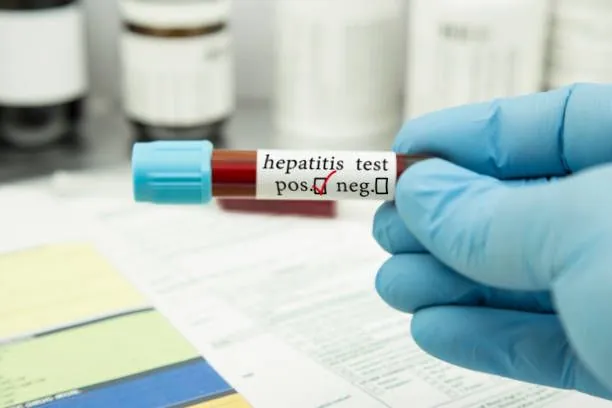
The Crucial Need for Accurate Screening of Hepatitis Delta Virus (HDV)
2024-09-23
Author: Daniel
Introduction
Hepatitis Delta Virus (HDV) is a formidable foe in the realm of viral hepatitis, functioning as a satellite virus that exacerbates liver damage in individuals already infected with Hepatitis B Virus (HBV). Screening for HDV antibodies is paramount, particularly for patients testing positive for Hepatitis B surface antigen (HBsAg). While there has been uncertainty surrounding the diagnostic accuracy of serological tests, recent findings suggest that tests targeting Anti-HDV IgG are proving particularly effective for screening purposes.
Study Findings
The study results revealed staggering figures: serological tests for Anti-HDV IgG showcased an impressive sensitivity rate of 97.4%. Comparatively, total Anti-HDV yielded a sensitivity of 51.9%, while Anti-HDV IgM was at 62%. Specificity rates mirrored this trend, with Anti-HDV IgG boasting 95.3% specificity, while Total Anti-HDV and Anti-HDV IgM offered 80% and 85% specificity, respectively. Notably, investigators have emphasized that Anti-HDV IgG tests are outperforming other methods, potentially due to the sporadic nature of IgM anti-HDV antibody detection during specific phases of infection.
Research Review
A comprehensive examination involving multiple reputable databases, such as PubMed, Web of Science, and Scopus, was undertaken to gather pertinent studies. The review considered sensitivity and specificity of various serological HDV tests against PCR as the reference standard, ultimately analyzing six studies across 11 different methodologies, including ARCHITECT immunoassay and ELISA, focusing on the efficacy of Anti-HDV IgG, Total Anti-HDV, and Anti-HDV IgM tests.
Key Findings
Interestingly, the findings reversed initial expectations; in-house assays for detecting Anti-HDV eclipsed the performance of commercial tests. This challenges the norm and indicates that more research is warranted to assess the effectiveness of these in-house methods, which have previously demonstrated a 100% sensitivity and specificity rate for a hepatitis B-focused assay.
Key Takeaways
1. Unparalleled Accuracy: Anti-HDV IgG tests stand out with remarkable sensitivity (97.4%) and specificity (95.3%), establishing them as reliable tools for identifying HDV in patients with HBV.
2. Research Gaps: The limited volume of studies addressing HDV screening underscores a significant research void that complicates the interpretation of findings regarding the infection type and HDV genotype.
3. In-House Assays Shine: The superior performance of in-house assays relative to commercial tests indicates a need for healthcare providers to reconsider their screening methodologies.
Conclusion
Despite these promising findings, the study's limitations are significant, including the scarcity of publications that restrict evaluation of how factors like infection type and timing influence test performance or the impact of HDV genotypes. Experts have issued a cautionary note that the results of this meta-analysis should be interpreted prudently, especially given the predominant focus on Anti-HDV IgG in the analyzed studies, leaving other testing methods underrepresented.
Public Health Implications
Why is this discussion so critical? Despite being identified over four decades ago, HDV continues to be widespread, posing serious health risks with chronic hepatitis D being linked to the most severe forms of viral infection. In the United States alone, the prevalence of HBsAg was about 0.36% between 2011 and 2016, with approximately 42% of carriers also harboring HDV antibodies. Alarmingly, screening rates for HDV remain low; hence, 'reflex testing' for individuals with a confirmed HBsAg positivity could significantly enhance diagnosis rates.
Management Strategies
Management strategies for HDV vary based on whether it occurs as a co-infection or superinfection, with superinfections accounting for around 90% of chronic cases and often resulting in dire outcomes. Currently, there is no FDA-approved therapy for chronic HDV, although off-label use of pegylated interferon exists, and investigational agents like bulevirtide are being examined for their potential. Achieving sustainable viral suppression remains elusive, but there is hope that combination therapies that target HBsAg synthesis could be the key to effective treatment for chronic HDV in the future.
In conclusion, highlighting the necessity for comprehensive and accurate screening of HDV among HBV patients is crucial. Despite the limitations and remaining gaps in knowledge regarding infection type and HDV genotype, future research is essential for fostering a deeper understanding and improving patient outcomes significantly. As we continue to navigate this pressing public health issue, the call to action for more robust HDV screening and research is louder than ever. Don't get left behind—every detail counts in the fight against hepatitis!


 Brasil (PT)
Brasil (PT)
 Canada (EN)
Canada (EN)
 Chile (ES)
Chile (ES)
 Česko (CS)
Česko (CS)
 대한민국 (KO)
대한민국 (KO)
 España (ES)
España (ES)
 France (FR)
France (FR)
 Hong Kong (EN)
Hong Kong (EN)
 Italia (IT)
Italia (IT)
 日本 (JA)
日本 (JA)
 Magyarország (HU)
Magyarország (HU)
 Norge (NO)
Norge (NO)
 Polska (PL)
Polska (PL)
 Schweiz (DE)
Schweiz (DE)
 Singapore (EN)
Singapore (EN)
 Sverige (SV)
Sverige (SV)
 Suomi (FI)
Suomi (FI)
 Türkiye (TR)
Türkiye (TR)
 الإمارات العربية المتحدة (AR)
الإمارات العربية المتحدة (AR)